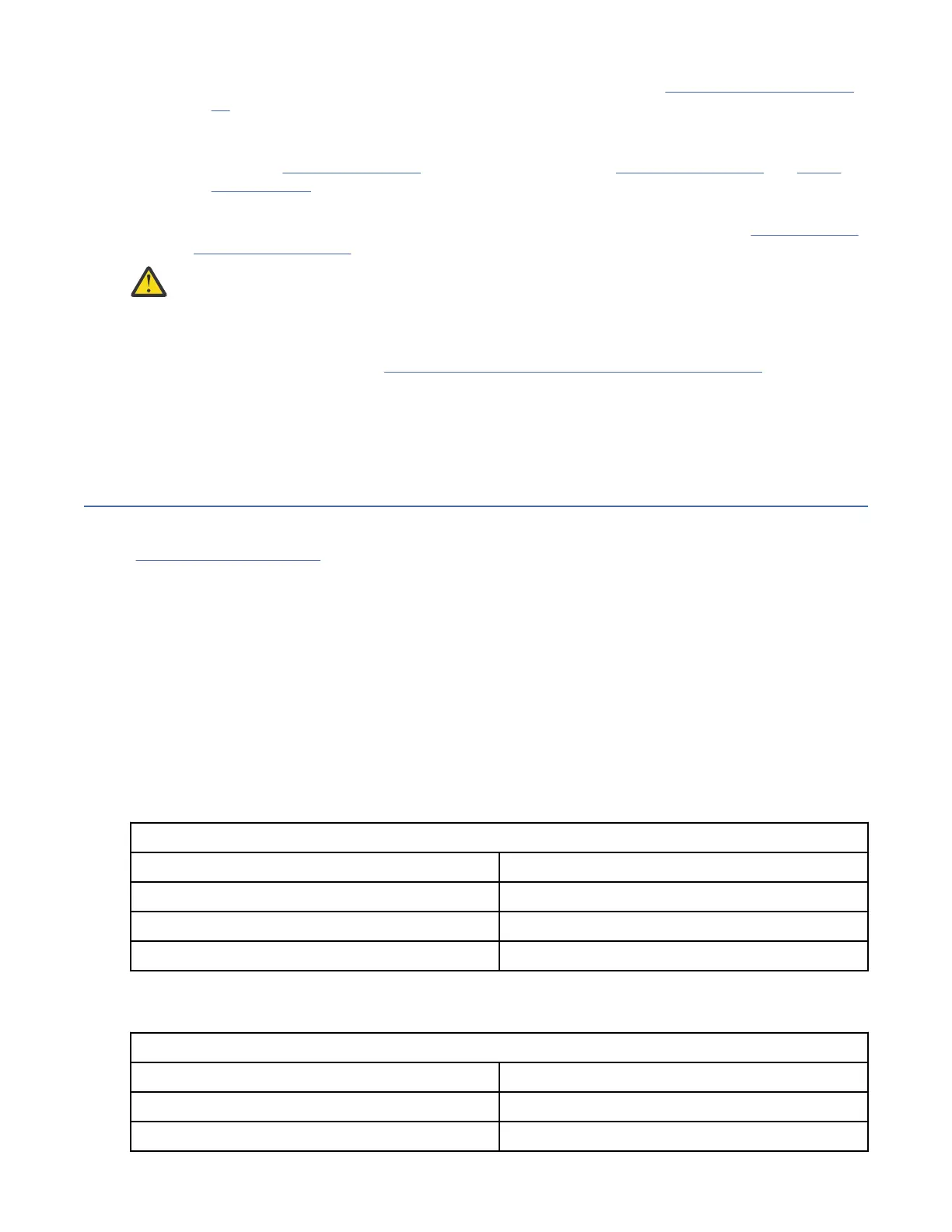– After installing the enclosure, and before installing the disks, see “ESD precautions” on page
67.
– To install disk drive modules into a rack-mounted enclosure, face the front panel, and pull the
enclosure outward on its rails. Remove the top lid(s) to provide access to the disk module
slots. See Figure 9 on page 12 for removable lids, and see Figure 10 on page 13 and Figure
11 on page 13 for disk slots and CRU module slot indexing.
• Belt straps and optional lift handles are designed to support the weight of the enclosure as
shipped. They are not designed to support a fully populated enclosure. See also “Unpacking the
enclosure” on page 29.
CAUTION: Use a suitable mechanical lift for hoisting the enclosure for installation into the rack:
• Fully congured Model 106 enclosures can weigh up to 145.6 kg (321 lb). Do not install disks
until after the enclosure is secured into the rack.
• When positioning the enclosure into its rack space, use the optional enclosure lift handles (two
handles per side). See also “Requirements for rackmount installation” on page 31 for
additional information.
• Observe the lifting hazard label afxed to the storage enclosure.
• Avoid use of a vacuum lift because it can potentially damage the Model 106 enclosure.
Relocating ESS racked system 5147-106 (4U106)
Important: Relocation of this enclosure is not a Customer action. You must contact IBM service
(www.ibm.com/planetwide) to relocate this enclosure. Loss of data or system damage may result if IBM
service does not perform the relocation action.
Shipment or storage conditions that exceed the specied limits can cause permanent damage to your
server. These guidelines should be followed when relocating or temporarily storing your server.
Care should be taken to ensure that a server is not stored with chemicals that can cause corrosion
damage.
When a server is removed in preparation for shipment or storage, use the packaging bill of material. This
might include a protective package, including blocks, braces, and preparation instructions, designed
uniquely for each server. This is available from any IBM
®
branch ofce. IBM large processors are designed
for operation in a controlled temperature and relative humidity range, and require the environment be
kept within this range even when they are in a storage area or in transit. See the individual server
specications for operating environment limits. Shipment of large processors should be in an
environmentally controlled van with appropriate strapping and padding to avoid any transit damage.
Table 1. Table 1. Typical shipping environment
Properties Shipping environment
Temperature -40°C - 60°C (-40°F - 140°F)
Relative humidity 5% to 100% (no condensation)
Maximum wet bulb 1°C - 27°C (33.8°F - 80.6°F)
If shipping a large processor in a nonenvironmentally controlled van, contact your seller for packing and
unpacking instructions.
Table 2. Table 2. Typical storage environment
Properties Storage environment
Temperature 1°C - 60°C (33.8°F - 140°F)
Relative humidity 5% - 80%
4 IBM ESS expansion: Hardware Installation and Maintenance Guide - Model 106
